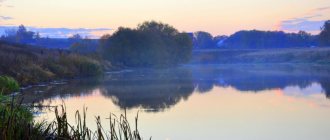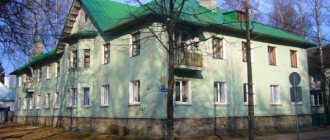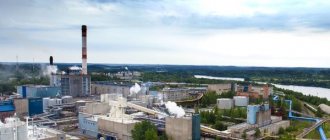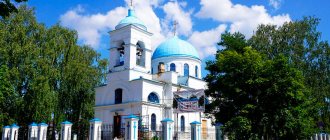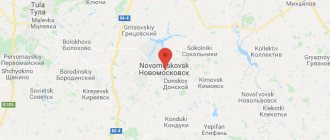Large cities 100-250 thousand people
Coat of arms of Kolpino
Kolpino
Population 144,288 people (2016).
Founded in 1722 next to the dam and sawmill built here in 1710, the city has been around since 1912. For three centuries it has been a major center of heavy engineering. The main enterprise of the city is the Izhora Plant, in the 18th-19th centuries. which produced materials and components for shipbuilding, and now produces equipment for petrochemicals and nuclear energy (including nuclear reactor vessels), metallurgical semi-finished products from steels with special properties, bridge and road metal structures.
Coat of arms of Pushkin
Pushkin
Population 102,729 people (2016).
Founded in 1710, city since 1808. Until 1918 - Tsarskoe Selo, from 1918 to 1937 - Detskoe Selo. One of the most famous imperial residences in the suburbs of St. Petersburg. The city is home to the famous Tsarskoye Selo palace and park ensemble, including the grandiose Catherine Palace and the Lyceum, where Alexander Pushkin studied. Nowadays it is a scientific, educational and tourist center.
Medium-sized cities 20-100 thousand people
Coat of arms of Peterhof
Peterhof
Population 78,457 people (2016).
Founded in 1705 as a “travel yard” (Petrov yard - German: Peterhof
), in 1710 the construction of the world-famous country residence of Peter I began here. The city has been in operation since 1762.
The Peterhof palace and park ensemble is famous for its numerous parks, ponds, canals and, most of all, intricate fountains and cascades of fountains. Here is the watch factory of the famous Raketa brand (founded in 1721 as the Peterhof Lapidary Factory). In the 1970s and 1980s. a suburban campus of St. Petersburg State University was built on the outskirts of the city. In 2005, Peterhof received the status of a science city. Coat of arms of Krasnoe Selo
Red Village
Population 54,422 people (2016).
Founded in 1714 by Peter I as a paper mill (factory) south of St. Petersburg, city since 1925. The settlement during the Imperial era was in the possession of the royal court. city since the year In the middle it turned into the summer military capital of the Russian Empire - large-scale military training and exercises took place here. For a long time there was a paper factory in the city, now there is a plastics factory on part of its territory.
Coat of arms of Lomonosov
Lomonosov (city)
Population 43,244 people (2016).
Founded in 1710 as Oranienbaum - the suburban residence of the first St. Petersburg governor A.D. Menshikov. City since 1780. Known for its palace and park ensemble - the largest ensemble of Peter the Great's Baroque in the suburbs of St. Petersburg. Due to the fact that Soviet troops managed to hold the famous Oranienbaum bridgehead during the Great Patriotic War, the city was not destroyed by the Germans, unlike the neighboring palace and park residences located along the famous Peterhof road.
Coat of arms of Kronstadt
Kronstadt
Population 43,005 people (2010).
Founded in 1704 as a fortified city on Kotlin Island in the Gulf of Finland, guarding the approaches to St. Petersburg. Already under Peter I it became a base for the Baltic Fleet and continues to play this role to this day. In 1983, Kotlin Island was connected to the mainland from the north by a dam along which a highway ran. In 2011, the dam also approached the city from the south.
Coat of arms of Sestroretsk
Sestroretsk
Population 40,090 people (2016).
Founded in 1714 as the country residence of Peter I, the city since 1925. In 1721-1724. The Sestroretsk arms factory was built here, along with a dam that formed a large reservoir. The plant was one of the main military-industrial enterprises of the Russian Empire, producing cannons, firearms, as well as civilian products. At the end of the 19th century, Sestroretsk turned into a dacha and sanatorium-resort area.
Cities of the Leningrad region
Gatchina -
located 8 km south of St. Petersburg, this city is famous for its palace and park complex, included in the UNESCO World Heritage List. This is the most populated city in the Leningrad region; in 2010 the population was 92,937 people. Pros: large industrial center, good infrastructure. The disadvantage is constant problems with roads and transport.
Vyborg -
a truly unique city for Russia, which has preserved its medieval appearance. The main attraction is Vyborg Castle, founded by the Swedes in 1293.
Historical center of Vyborg
But this is not only a city of historical monuments, but also a large industrial center and port. Pros: Only 27 km to the border with Finland, so the Eurozone is within easy reach, given the ease of obtaining a Finnish visa. Cons: crime and unsatisfactory state of housing and communal services.
Pinery -
this city of nuclear scientists with a population of 67 thousand people. located on the shores of the Gulf of Finland, west of St. Petersburg. There is very beautiful nature and developed infrastructure here. Minus: the presence of the Leningrad Nuclear Power Plant, although the radioactive background is normal.
Leningrad Nuclear Power Plant. Photo by Alexey Kuklin
Vsevolozhsk —
located just 24 km from St. Petersburg. If in 1920 almost half of the population of these places were Finns, now their share has dropped to less than 1%. The city is growing rapidly, and its population has reached 60 thousand people. Here, unemployment is the lowest in the region, and this is not surprising, because in addition to this, large factories of other companies are located here - Severstal, Nokian, Merloni, etc. The city has excellent infrastructure and is one of the locomotives of the region's economy. Disadvantages: ecology. Despite the abundance of lakes, all of them are considered unsuitable for swimming.
Small towns of less than 20 thousand people
Coat of arms of Pavlovsk
Pavlovsk (St. Petersburg)
There are other meanings of this name, see Pavlovsk
Population 16,525 people (2016).
Founded in 1777 as the country residence of the future Emperor Paul I, the city since 1796. The city has a large palace and park ensemble also called Pavlovsk.
Coat of arms of Zelenogorsk
Zelenogorsk (St. Petersburg)
There are other settlements with this name, see Zelenogorsk
Population 14,968 people (2016).
It was first mentioned in 1548 as the Finnish fishing village of Terijoki. The city was founded in 1946 and received its modern name in 1948. Since the end of the 19th century it has been one of the dacha suburbs of St. Petersburg; in the 20th century it turned into a famous sanatorium and resort center.
see also
- Saint Petersburg
- Cities of Russia
| [ + ] Cities by regions of Russia | |
| Cities of the North-West (NWFD) | St. Petersburg (and the cities within it ) • Leningrad region (historical Staraya Ladoga) • Arkhangelsk region • Vologda region • Kaliningrad region • Karelia • Komi • Murmansk region • Nenets Autonomous Okrug • Pskov region |
| Cities of the Volga region (Volga Federal District) | Bashkortostan • Volgograd region • Kalmykia • Kirov region • Mari El • Mordovia • Nizhny Novgorod region • Orenburg region • Penza region • Perm region • Samara region • Saratov region • Tatarstan • Udmurtia • Ulyanovsk region • Chuvashia |
| Cities of Southern Russia (SFD) | Sevastopol (including Inkerman) • Republic of Crimea • Adygea • Astrakhan region • Krasnodar region • Rostov region |
| Cities of the North Caucasus (NCFD) | Dagestan • Ingushetia • Kabardino-Balkaria • Karachay-Cherkessia • North Ossetia - Alania • Stavropol Territory • Chechen Republic |
| Cities of the Urals (Ural Federal District) | Kurgan region • Sverdlovsk region • Tyumen region • Khanty-Mansi Autonomous Okrug - Yugra • Chelyabinsk region • Yamalo-Nenets Autonomous Okrug |
| Cities of Siberia (Siberian Federal District) | Altai Republic • Altai Territory • Irkutsk Region • Kemerovo Region • Krasnoyarsk Region • Novgorod Region • Novosibirsk Region • Omsk Region • Tomsk Region • Tyva • Khakassia |
| Cities of the Far East (FEFD) | Amur Region • Buryatia • Jewish Autonomous Region • Trans-Baikal Territory • Kamchatka Territory • Magadan Region • Primorsky Territory • Sakha (Yakutia) • Sakhalin Region • Khabarovsk Territory • Chukotka Autonomous Region |
| see also | Cities of the DPR, LPR, Transnistria, South Ossetia • Regions of Russia • Cities of Russia |
General information about the Leningrad region
Distinctive features
. The Leningrad region is part of the Northwestern Federal District. Although instead of the city of Leningrad, St. Petersburg again strengthened in our minds, as in the good old days of the Russian Empire, officials did not change the name of the region. Most of the region's territory used to be part of the St. Petersburg province. The proximity of the capital left its mark on the economy and culture of these places. First of all, this is the abundance of architectural masterpieces that flood the surroundings of the northern capital. The palaces of emperors, empresses and representatives of the flower of the Russian nobility today have become museums attracting tourists to Lomonosov, Gatchina and other towns near St. Petersburg.
Gatchina is especially beautiful in summer
Geographical location
. When Tsar Peter I decided to found St. Petersburg, it seems that he did not care at all whether the local climate would be to the liking of the residents of the new capital of Russia. 60 degrees north latitude is no joke, and severe frosts are not uncommon here in winter, with temperatures easily reaching 25 degrees below zero. Despite the abundance of swamps, the nature here is very beautiful. There are 1,800 lakes in the Leningrad region, including Ladoga, the largest in Europe. The northern part of the region is washed by the waters of the Gulf of Finland, providing access to the Baltic Sea, and from there to the Atlantic.
Sukhodolskoye Lake
Population.
Despite its proximity to such a great city as St. Petersburg, the Leningrad Region is inferior in population to dozens of other regions of Russia. As of 2013, the population of the Leningrad region was 1.71 million people, which is explained by its northern location and harsh climate.
In terms of gender structure, there is practically no difference with the Moscow region (46.3% are men, 53.7% are women). In terms of population density, the region is in the very middle of the ranking (20.87 people per sq. km.) In terms of national composition, almost 93% of the region’s population are Russians. The largest age group is pensioners (22%), the smallest is children and teenagers (14.3%).
Crime
. In terms of crime level, the Leningrad region is in favorable 60th place in the ranking. The number of registered crimes per year is only 15 per 1000 people. Moreover, thanks to the excellent work of law enforcement agencies, there is a steady downward trend in the number of crimes.
Unemployment rate
in the Leningrad region is much higher than, for example, in Moscow or the Moscow region - 3.24%. But fortunately, this figure is decreasing every year. This is especially noticeable compared to 2000, when it was as much as 9.63%. However, in the ranking of regions by unemployment rate, the region firmly ranks 4th, which cannot please those who decide to live and work there. In terms of wages, the Leningrad region is second only to Moscow, St. Petersburg and the Moscow region. The average salary here fluctuates around 26,000 rubles.
Vsevolzhsk. Panorama. Photo by Rusbat-27
Property value
in the Leningrad region depends on the city, the quality of housing and the year of construction. The most expensive are new buildings in the suburbs of St. Petersburg. Due to their proximity to the center and good environmental situation, such objects are very attractive. Apartments in such new buildings can reach 10 million rubles for a three-room apartment. Inexpensive, budget housing costs from 1 million rubles.
Climate
Leningrad region - harsh, oh harsh. This is one of the main reasons why people do not want to move here. In summer it’s +17°C, in winter –10°C. The average annual precipitation is 600-700 mm. Summer and autumn are very rainy, so if you have a sunbathing day, try to make the most of it, otherwise you will have to wait until next year.
